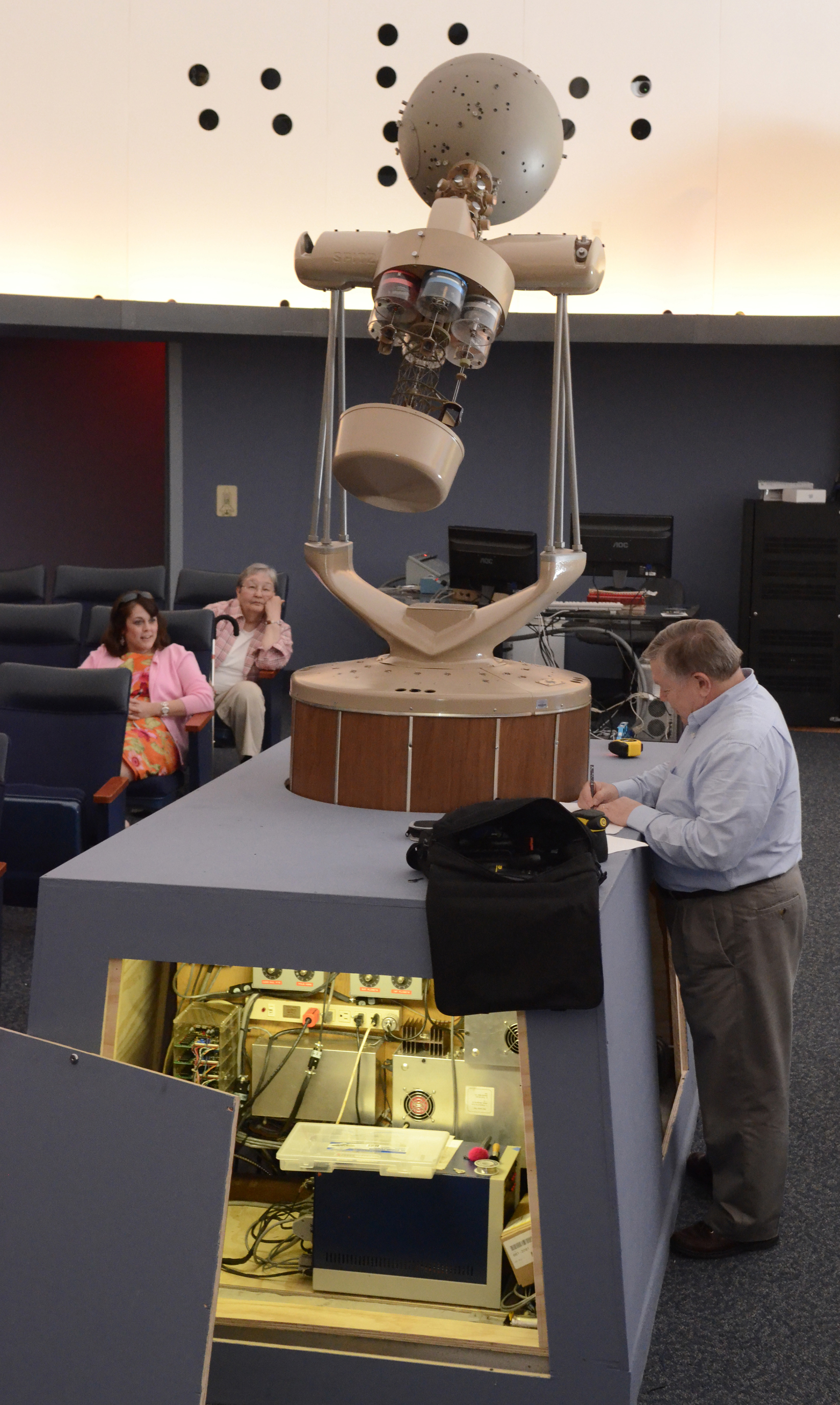 Phil Groce, president of Helping Planetariums Succeed, takes measurements at the Smith Planetarium on Pond Springs Road south of Chickamauga, Ga., while Robin Samples, left, director of curriculum and instruction for Walker County Schools, and retired teacher Shirley Smith watch. The Walker County school system operated the planetarium and a NASA telescope at the site until a storm damaged the adjoining school building.
Phil Groce, president of Helping Planetariums Succeed, takes measurements at the Smith Planetarium on Pond Springs Road south of Chickamauga, Ga., while Robin Samples, left, director of curriculum and instruction for Walker County Schools, and retired teacher Shirley Smith watch. The Walker County school system operated the planetarium and a NASA telescope at the site until a storm damaged the adjoining school building.FAST FACTS• The Smith Planetarium has 92 seats donated by a planetarium in Nashville.• The 40-foot-diameter dome was donated by a planetarium in Jacksonville, Fla.• The dome hangs by chains from the planetarium's ceiling.• James Smith founded Walker County's first planetarium in 1967 in Rock Spring, Ga.• At least four astronomers were inspired in part by Smith: NASA astronomers Bill Cooke and Rob Suggs, Georgia State University professor Harold "Hal" McAlister, and science writer and planetarium show producer Carolyn Collins Petersen
CHICKAMAUGA, Ga. - When the Smith Planetarium opened in May 2011 on Pond Springs Road, its namesake James A. Smith led the first program, pointing out constellations on the domed ceiling with a handheld green laser beam.
Then on June 18 of last year, a "gustnado" blew the roof off the former Pond Springs Elementary School building that's connected to the planetarium. The planetarium building was unharmed, but its programs were put on hold.
"I had never heard of a gustnado before," said Smith, a retired Walker County educator who's on the school board. "It's not exactly straight line winds. It's a straight-line wind -- with a curve."
Come fall, the planetarium should be back in business.
Work started last week to demolish the old elementary school, and a planetarium parking lot will take its place.
And a new, digital projector is on the way to replace the mechanical projector that did almost 20 years of service in Walker County.
"We feel like we need to have more up-to-date technology," Smith said.
The Konica Minolta Media Globe II projector doesn't have gears, motors or star globes. It's equipped with a fish-eye lens that projects stars, planets and galaxies generated by a computer database.
"It's a full 3-D rendering of the universe," Smith said.
With the new projector, the planetarium will no longer be earthbound. It's possible to "fly" to the surface of Mars, for example, and view constellations -- and the Earth -- from the red planet's surface.
That flexibility goes further. Shows specially made for the 360-degree, fish-eye projector can take viewers into such places as the earth's interior to study plate tectonics or on a tour of the human body, Smith said.
"It's sort of like an Imax," he said.
The planetarium also will have a standard-format digital projector to show images from a 14-inch NASA telescope located about 200 feet behind the planetarium. On 10 days a month when the moon's just a sliver, the NASA telescope takes black-and-white video of meteorites smashing into the lunar surface.
Huntsville, Ala.-based NASA astronomers Bill Cooke and Rob Suggs sited the telescope in Chickamauga partly out of respect for Smith.
"Jim was a big influence on my life," Cooke said.
Cooke and Suggs attended Rossville High School in the 1970s and hung around the planetarium and observatory that Smith set up in Rock Spring in 1967. The planetarium stayed in Rock Spring until 1998.
"He was just so excited about science," Suggs said of Smith. "For a space geek like me to have a planetarium to hang around and having access to all that stuff [was great]."
Two other astronomy professionals influenced by Smith are Harold "Hal" McAlister, a professor at Georgia State University, and Carolyn Collins Petersen, a science writer who produces planetarium shows.
Suggs said, "I look forward to seeing some future space scientists coming out of Walker County."
